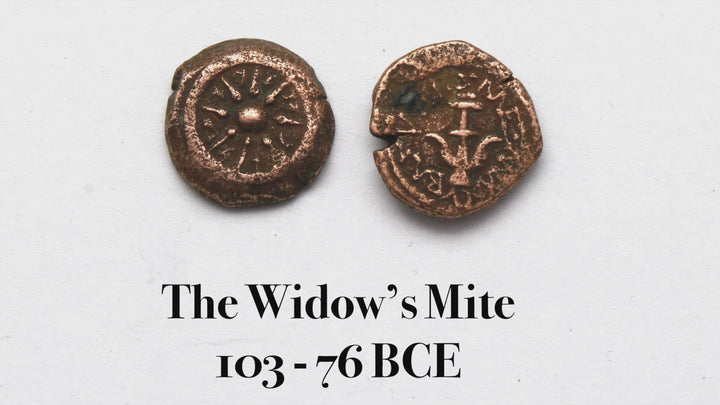Free Shipping On U.S. Orders Over $100
Contact:erezllc@gmail.com | (916) 769-9256
Description: Judaea, AE Prutah, Widow’s Mite (103-76 BCE)
Obverse: Anchor, with Greek inscription “BASILEWS ALEXANDROU” (“King Alexander”). Reverse: Eight-rayed star, with Hebrew inscription “Yehonatan the King” between the rays.
History: This small bronze coin, commonly referred to as the “Widow’s Mite,” was minted during the reign of Alexander Jannaeus (Yehonatan), a Hasmonean king and high priest who ruled Judaea from 103-76 BCE.
The coin’s anchor symbolizes maritime power and Hellenistic influence, while the eight-rayed star represents divine favor or celestial authority, a common motif on Hasmonean coinage. The coins widely circulated and were used in everyday transactions.
This coin is famously associated with the New Testament story of the Widow’s Mite (Mark 12:41-44, Luke 21:1-4). According to the Gospel accounts, Jesus observed a poor widow donating two small coins to the Temple treasury. Though a tiny sum, He declared her offering more significant than that of the wealthy, as she had given all she had in devotion.
“And he saw also a certain poor widow casting in thither two mites. And he said, Of a truth I say unto you, that this poor widow hath cast in more than they all.” – Luke 21:2-3
★★★★★
★★★★★
★★★★★







